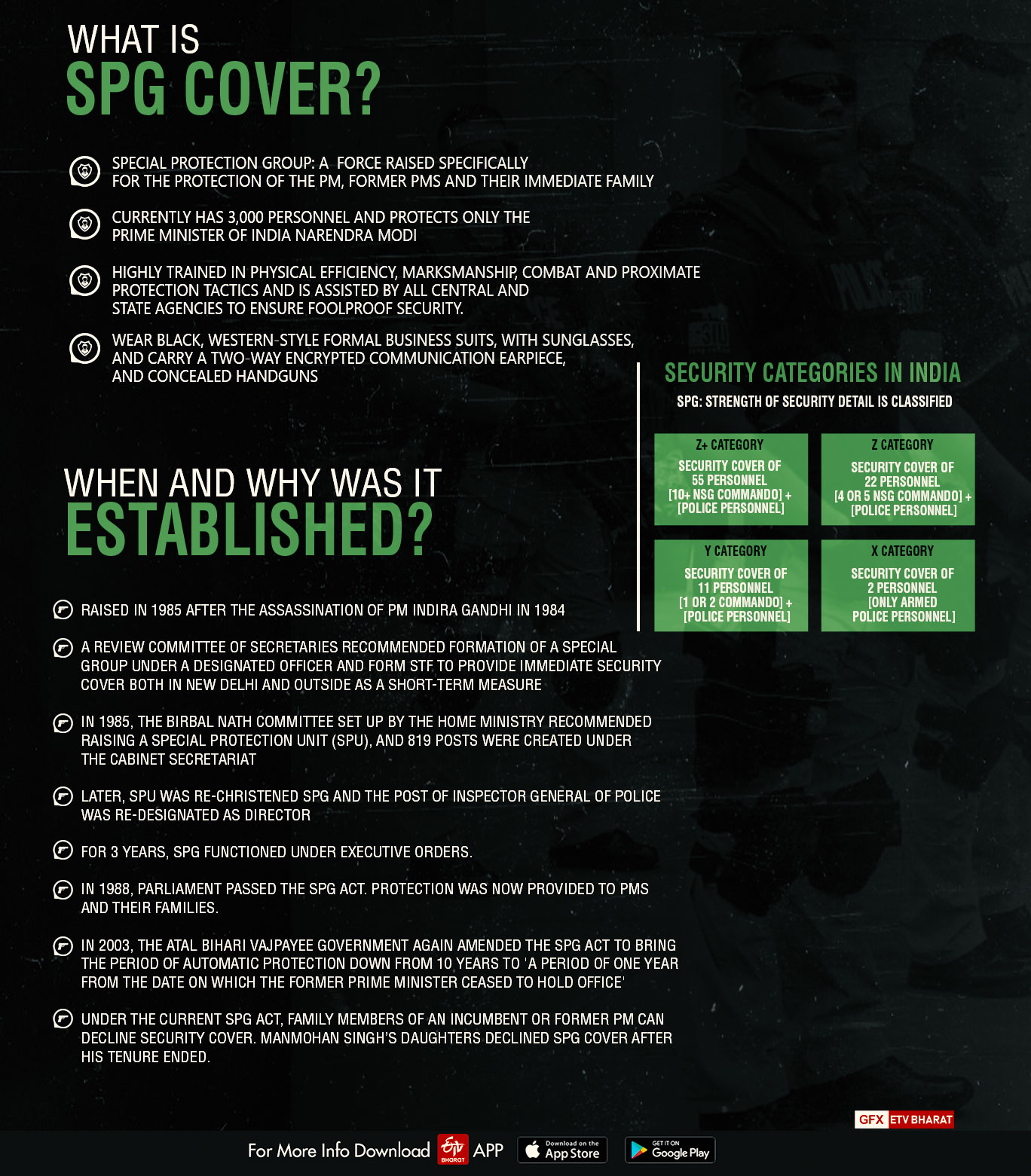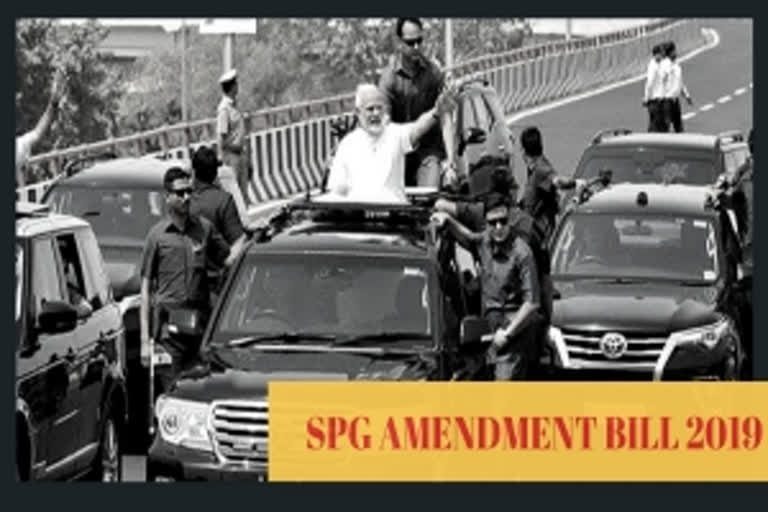The Journey of SPG
Hyderabad: The SPG was raised in1985 after Prime Minister Indira Gandhi was shot dead by her bodyguards. Its sole mandate was the prime minister's security.
In 1985, the Birbal Nath Committee set up by the Home Ministry recommended raising a Special Protection Unit (SPU), and 819 posts were created under the Cabinet Secretariat.
The SPU was then re-christened SPG and the post of Inspector General of Police was re-designated as director. For three years, SPG functioned under executive orders.
On June 2, 1988, it got legislative backing through the Special Protection Group Act.
In 1988, Parliament passed the SPG Act. Then, the Act did not include former prime ministers. When VP Singh came to power in 1989, his government withdrew SPG protection given to his predecessor Rajiv Gandhi.
Rajiv Gandhi´s assassination in 1991 led to the SPG Act being amended to provide security to all former prime ministers and their immediate families for 10 years after demitting office.
The last amendment, in 2003, entitled all former prime ministers and their immediate family to SPG cover for at least one year after demitting office and thereafter based on the threat perception assessed annually by the Central government.
The Gandhis had been SPG protectees since Rajiv Gandhi´s assassination.

SPG (Amendment) Bill, 2019: Key Features
The SPG (Amendment) Bill, 2019 amends the SPG Act and states that the SPG security will be provided to the Prime Minister and his immediate family members living with him at his official residence.
The bill also states that the SPG security will be provided to former Prime Minister and his immediate family members, who reside with him at the officially allotted residence for 5 years from the date he ceases to hold the office.
The SPG (Amendment) Bill, 2019 amends the SPG act’s condition to continue the SPG cover of the PM’s immediate family members if the level of perceived threat is high in case of withdrawal of the SPG cover to the former Prime Minister.
The bill states that if the SPG cover is withdrawn from a former Prime Minister, it shall also stand withdrawn from his immediate family members. This means that in case of death of an ex-PM, the SPG security would be withdrawn from his immediate family members.
Under the bill’s provisions, only those family members, who stay with the PM or former PM at the allotted residence, will be provided with SPG security cover.
Different layers of protection
There are largely six types of security covers: X, Y, Y plus, Z, Z plus and SPG.
While SPG is meant only for the PM and his immediate family, other categories can be provided to anyone about whom the Centre or state governments have inputs about facing a threat.
Z plus has 10 security personnel for mobile security and two (plus eight) for residence security.
Z has six gunmen for mobile security and two (plus eight) for residence security.
Y plus has two policemen on rotation for security and one (plus four on rotation) for residence security.
Y has one gunman for mobile security and one (plus four on rotation) for static security
The X category on an average entails just one gunman protecting the individual.
Withdrawal Of SPG Protection
During the Vajpayee regime, the SPG cover of former PMs such as HD Deve Gowda, IK Gujaral and PV Narasimha Rao was withdrawn.
Vajpayee himself enjoyed SPG protection until his death last year. Under the current SPG Act, family members of an incumbent or former PM can decline security cover.
Manmohan Singh’s daughters declined SPG cover after his tenure ended.
The Centre has downgraded former Prime Minister Manmohan Singh's security cover from SPG to Z+ in 2019 August.
Deciding On Level Of Protection A Individual Needs
The Home Ministry takes the decision based on inputs from intelligence agencies, which include the Intelligence Bureau and the Research and Analysis Wing.
They largely give a subjective measure of threat to life or injury to a person from terrorists or any other group, based on information from their sources.
Certain individuals, by dint of their position in government, are automatically entitled to security cover.
These include the Prime Minister and his immediate family. The Home Minister and officials such as the National Security Adviser too generally get security cover on the basis of their position.
VIP Protection in other Countries
USA :
In the US, the security of the President and his family is handled by the Secret Service, which also looks after the safety of the vice president, his immediate family, former presidents, their spouses, and their minor children under age 16.
It also provides security to major presidential and vice-presidential candidates and their spouses, and foreign heads of state; security for the White House, the Treasury Department building, the vice president’s residence, and foreign diplomatic missions in Washington, DC.
UK:
In the UK, VIP security, including of the PM, is handled by the Protection Command under London’s Metropolitan Police Service.
It has two branches: Royalty and Specialist Protection (RaSP), providing protection to the Royal Family, the PM and government officials, and Parliamentary and Diplomatic Protection (PaDP), providing security to government buildings, officials and diplomats.



